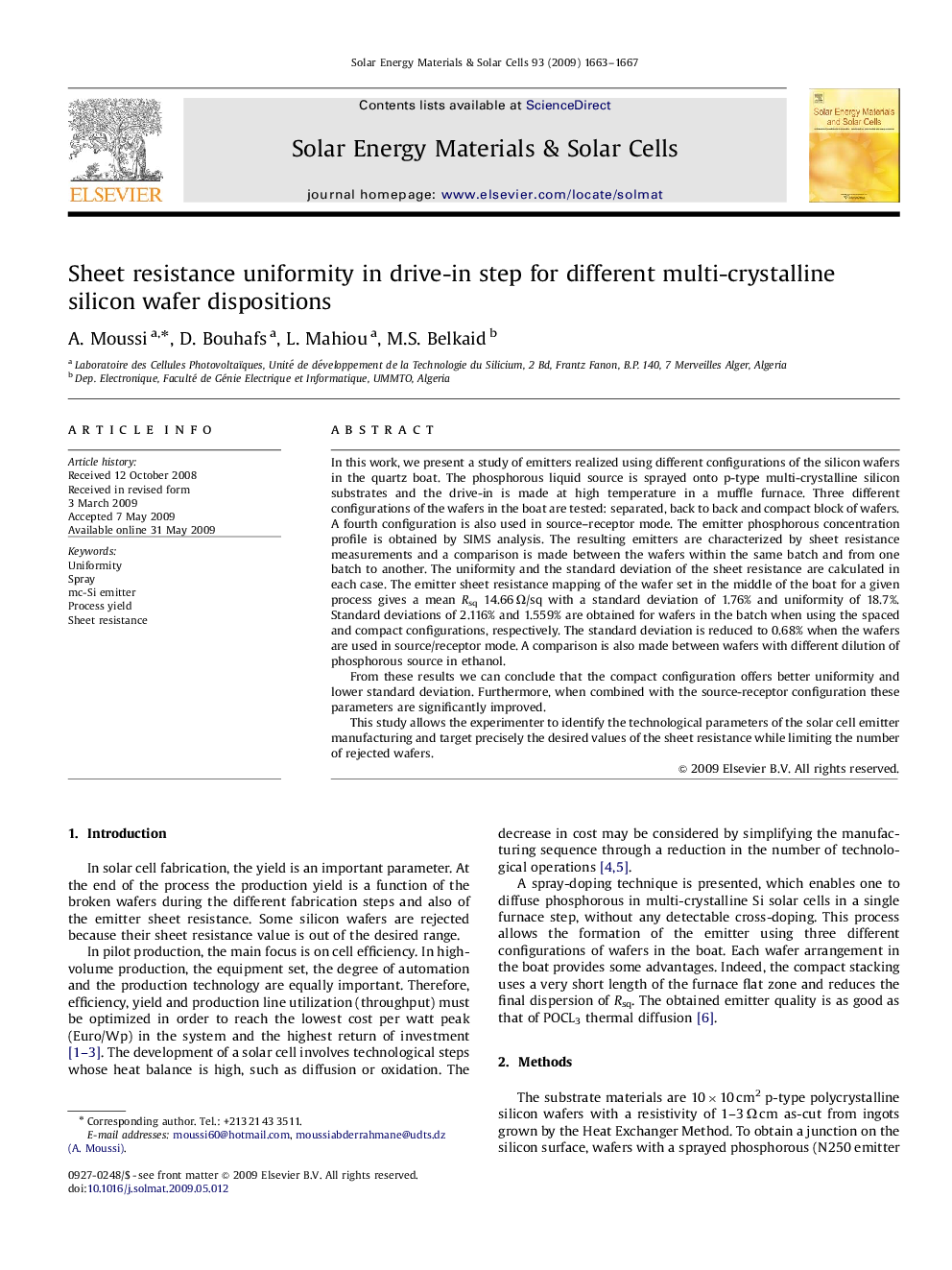| Article ID | Journal | Published Year | Pages | File Type |
|---|---|---|---|---|
| 80383 | Solar Energy Materials and Solar Cells | 2009 | 5 Pages |
In this work, we present a study of emitters realized using different configurations of the silicon wafers in the quartz boat. The phosphorous liquid source is sprayed onto p-type multi-crystalline silicon substrates and the drive-in is made at high temperature in a muffle furnace. Three different configurations of the wafers in the boat are tested: separated, back to back and compact block of wafers. A fourth configuration is also used in source–receptor mode. The emitter phosphorous concentration profile is obtained by SIMS analysis. The resulting emitters are characterized by sheet resistance measurements and a comparison is made between the wafers within the same batch and from one batch to another. The uniformity and the standard deviation of the sheet resistance are calculated in each case. The emitter sheet resistance mapping of the wafer set in the middle of the boat for a given process gives a mean Rsq 14.66 Ω/sq with a standard deviation of 1.76% and uniformity of 18.7%. Standard deviations of 2.116% and 1.559% are obtained for wafers in the batch when using the spaced and compact configurations, respectively. The standard deviation is reduced to 0.68% when the wafers are used in source/receptor mode. A comparison is also made between wafers with different dilution of phosphorous source in ethanol.From these results we can conclude that the compact configuration offers better uniformity and lower standard deviation. Furthermore, when combined with the source-receptor configuration these parameters are significantly improved.This study allows the experimenter to identify the technological parameters of the solar cell emitter manufacturing and target precisely the desired values of the sheet resistance while limiting the number of rejected wafers.
